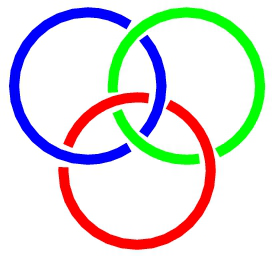Speaker
Prof.
Eberhard Widmann
(Stefan Meyer Institute for Subatomic Physics, Vienna, Austria)
Description
Experiments with low-energy antiprotons are currently performed at the antiproton Decelerator (AD) of CERN. The main focus of the three experimental collaboration is the study of fundamental symmetries, especially CPT invariance, using antiprotonic atoms and antihydrogen. The ASACUSA collaboration focusses on precision spectroscopy of antiprotonic helium, an exotic three-body system consisting of a helium nucleus, an electron and an antiproton. The antiproton occupies metastable states which allows precision determination of its mass and magnetic moment [1] by comparison to three-body QED calculations.
Anthydrogen, the simplest neutral antimatter atom, promises CPT tests of highest precision by comparison to hydrogen, which is one of the best studied atoms. The ATRAP and ALPHA collaborations aim at producing and trapping antihydrogen in a neutral-atom trap and to measure the 1S-2S two-photon transition [2] to a precision similar to the one achieved for hydrogen (relative precision ~10-14 ). ASACUSA is preparing an experiment to measure the ground-state hyperfine structure of antihydrogen [3], the corresponding quantity for hydrogen being measured to relative precision of ~10-12 in the hydrogen maser.
The AD delivers only pulsed beam which makes experiments of nuclear or particle physics type difficult. This restriction will not apply at the planned FLAIR facility [4] at FAIR, Darmstadt, where the availability of continuous antiproton beams at energies 100 times lower than at the AD will enable measurements not currently possible anywhere in the world. This talk will give an overview on current and planned experiments with low-energy antiprotons.
[1] R.S. Hayano, M. Hori, D. Horvàth, and E. Widmann, Rep. Prog. Phys. 12, 1995 (2007).
[2] G. Gabrielse, Adv. At. Mol. Opt. Phys. 50, 155 (2005).
[3] E. Widmann, R. S. Hayano, M. Hori, and T. Yamazaki, Nucl. Instr. Meth. B 214, 31 (2004).
[4] E. Widmann, Physica Scripta 72, C51 (2005).
Author
Prof.
Eberhard Widmann
(Stefan Meyer Institute for Subatomic Physics, Vienna, Austria)

